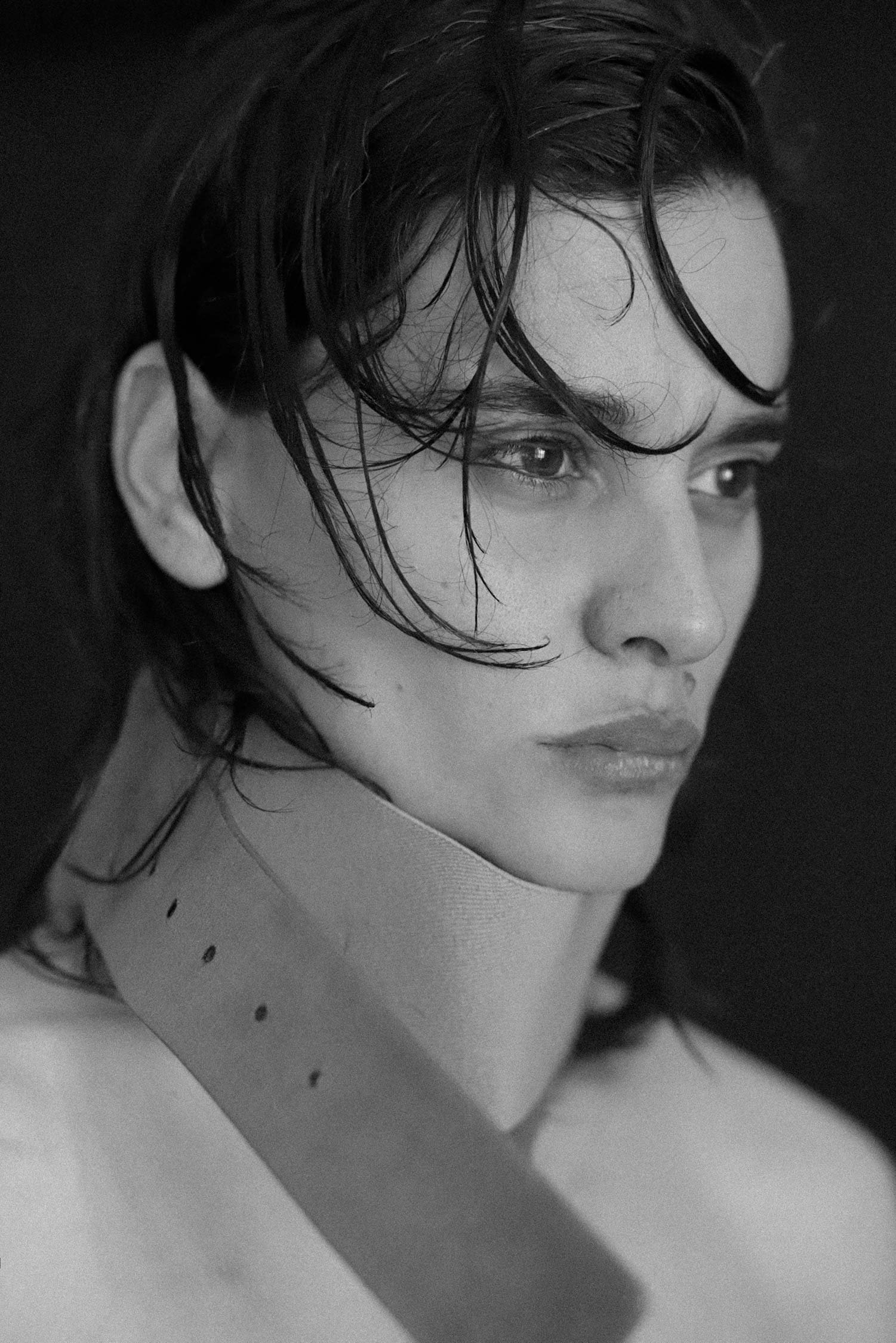LUNATICA
“In LUNATICA, my body becomes a bearer of symbols, clothes - a unifying accessory, and nature - the extension of my personality.” - Marianna Di Palma explains her approach to working on self-portraiture in this project. The strong presence of the character whose exploration of the self exposes different identities ranging from a personality drawn to the world of fashion to the one immersed in nature. The complex parallel presented between the self and nature highlights the idea of the ultimate loneliness. With Black & White imagery, the feeling of detachment from society and the intrinsic connection to the environment is strengthened.
Marianna Di Palma, aka Whilemann, is an Italian photographer and self-portrait artist, currently based in France. In the story LUNATICA, Marianna presents an additional angle of herself. Combining fashion in its minimalistic form with the search for various identities, Marianna offers an examination of the different facets of identity. We speak with Marianna about self-representation, the experience of the recent lockdown, minimalism, and her aesthetic.
‘It is a photographic research that focuses on the individual/body issue that at the same time assumes the dual role of subject and object.’
What is the central theme of LUNATICA? What was the drive pushing you to create the story?
The central theme of LUNATICA is self-representation. It is a photographic research that focuses on the individual/body issue that at the same time assumes the dual role of subject and object. During the quarantine, I had an opportunity to deepen even more the meaning of loneliness, but not only that, I lived in a very strong emotional whirlwind. I felt the need to create a much more intimate and vulnerable photographic work, close to my origins and my identity.
‘Self-portrait is comparable to an artistic performance, in which the artist becomes the author, subject, and spectator.’
How do you think self-portraits affect the artist’s self-identification and realization?
This work is not just an affirmation of my identity, but a corporeal vision, which is expressed through fashion and nature. I think that self-portrait is comparable to an artistic performance, in which the artist becomes the author, subject, and spectator.
What have you learned about yourself in the process?
What I have learned from self-portrait is that I can conceive it as a tool through which I can give body and face my identity - indeed, my multiple identities, which correspond with the different versions of myself offered to others.
‘My aesthetic vision is very simple: black and white captures attention only on emotion, it reduces everything to the essential, and it is in this aesthetic synthesis that I find myself.’
In the story, you successfully merge nature, fashion, and self-portraiture, connecting the images through black and white. Fashion offers aesthetic and restrained emotions; nature comes as a connecting element that emphasizes a more vibrant emotional background; while self-portraits offer a hint about a real self. What are the different forms of the self, the personality types you present in the series?
I have always thought that every individual has a personal concept of beauty. The human body is an extension of nature, and fashion can add pathos to this union. My aesthetic vision is very simple: black and white captures attention only on emotion, it reduces everything to the essential, and it is in this aesthetic synthesis that I find myself. In LUNATICA, my body becomes a bearer of symbols, clothes - a unifying accessory, and nature - the extension of my personality.
From a technical perspective, what does it take to finalize the image?
Each self-portrait is premeditated, from a technical and stylistic point of view it’s a creative process that arises from the mental image and ends in the photographic one. While in naturalistic photographs, there is none of this technical intentionality but a spontaneous search for the present 'moment.' The B&W film perfectly embodies this research of mine.
Which moment from this project is most precious to you?
The most precious moment is when I realized that I had created something that totally represents me and that will surely evolve over time in an even deeper search of myself.











